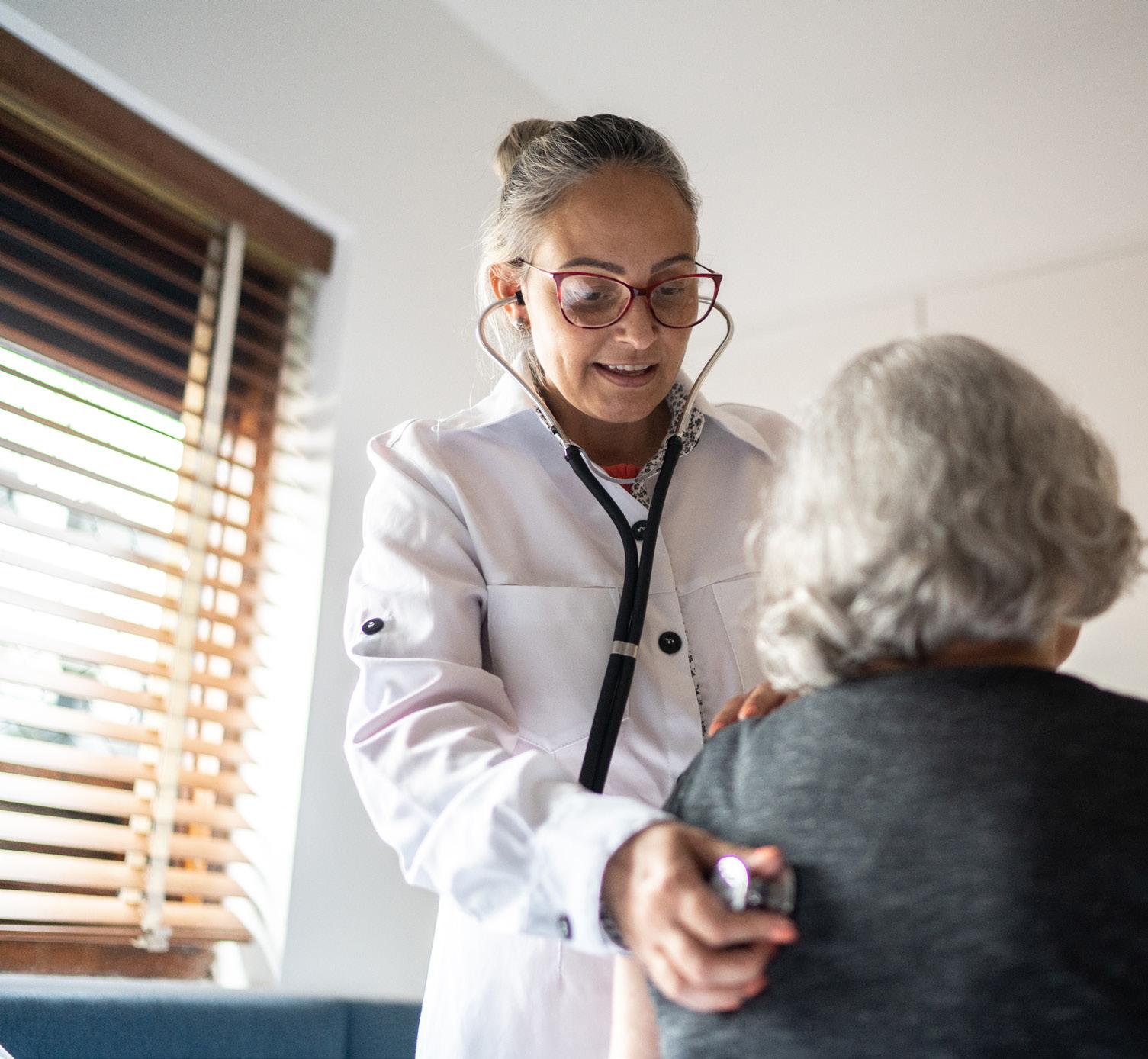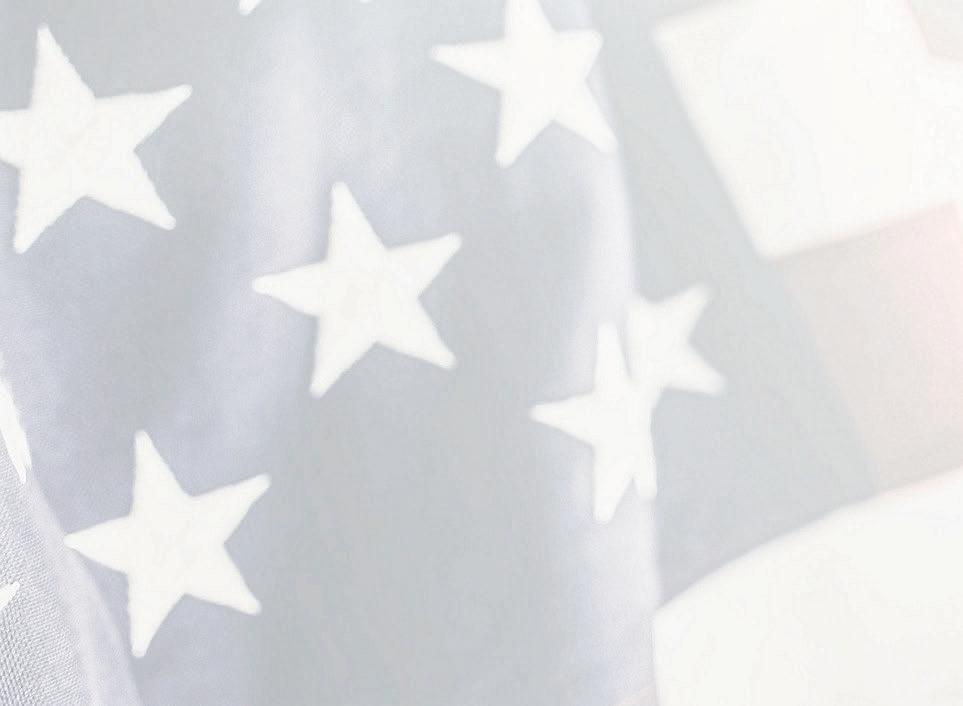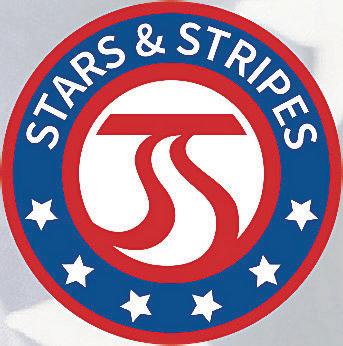VETERANS CHRONICLE
FEBRUARY 2025
LOOK INSIDE
FOR Your benefit questions
answered 20 facts about the military

Ridgeline High School creates connections

FOR Your benefit questions
answered 20 facts about the military

Ridgeline High School creates connections
By Don Walker
I cried today. I didn’t expect it to happen…. I mean, it’s been 57 years. They tell you “it will get easier over time.”
The fact is it will never get easier -- it just isn’t all the time.
Jan. 15, 2025, was the 57th anniversary of the death of my brother, 24 yr old 1st Lieutenant Richard H. Walker, who was killed in Vietnam.
You never know what will kick off the tears.
After all these years I realized: tearful moments aren’t bad things, they are just sad things.
This is what happened. I didn’t plan it to happen on this significant day, but it did. It wasn’t the date that made me remember and made me cry. It was a painting. This painting was done by Ridgeline High School sophomore Aimée Thompson. Aimee was a student in Mr. Kyle Genther’s art class.
The painting was one of several paintings honoring veterans on display at Ridgeline’s 2024 Veterans’ Day Ceremony and Concert.
There were several awesome paintings by many talented Ridgeline students in the art classes. The paintings were all wonderful and part of a very meaningful ceremony and concert.
The whole ceremony was moving. The huge gym was full of high school
students and teachers. A large section was setup for local veterans and their families. The main floor was filled by the talented Ridgeline school band and choir. In front, off to the side, was the group of paintings.With all the ceremonies, speeches and music, I could not take my eyes off Aimee’s painting.
It took my breath away -- it made me cry. After the ceremony I took a picture of Aimee’s painting…. It is now the screen saver on my MacBook.
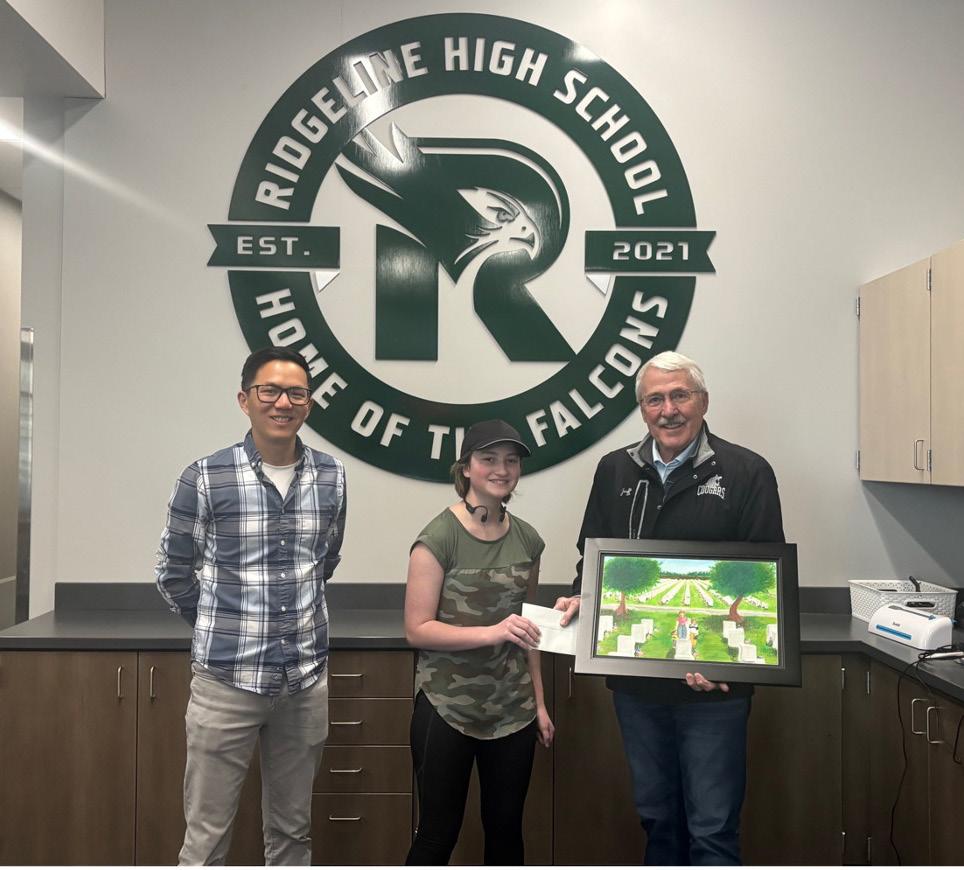
After a couple of weeks staring at the screen saver, I made a decision… I contacted the school and Mr. Genther and told them I wanted to purchase the painting.
I said I would pay Aimee or make a donation, whatever might work without breaking any rules. If I couldn’t buy the original, I would pay for a print. After a while, Mr. Genther contacted me and said that Aimee would be thrilled to let me buy the painting if it meant that much to me.
That gets us to today…
On Jan. 15, I met with Aimee and her teacher at Ridgeline and traded an envelope for the painting.
You can see the three of us in the photo above. (I am the one with the grey hair) I intended to say something about how we were honored to have this wonderful, meaningful painting, but when I tried to tell them, I choked up and teared up
again and could not get out those practiced and thoughtful words. I mumbled something like, “Thank you, the painting moved me.” Like I said before, you never know what kicks off the tears.
Every time I look at the painting hanging in my office, I will think of Aimee and her teacher, Mr. Genther.
But mostly, I will think about my brother Rich, and probably tear up again.
Thank you, Aimee, Your heart and soul shows in your painting. We are honored to have it hanging in our home.
Thank you, Kyle Genther, for such a wonderful project
Thank you, Ridgeline High School. You honored all veterans with your ceremony. Your program will help our community and future generations remember what Veterans Day stands for.
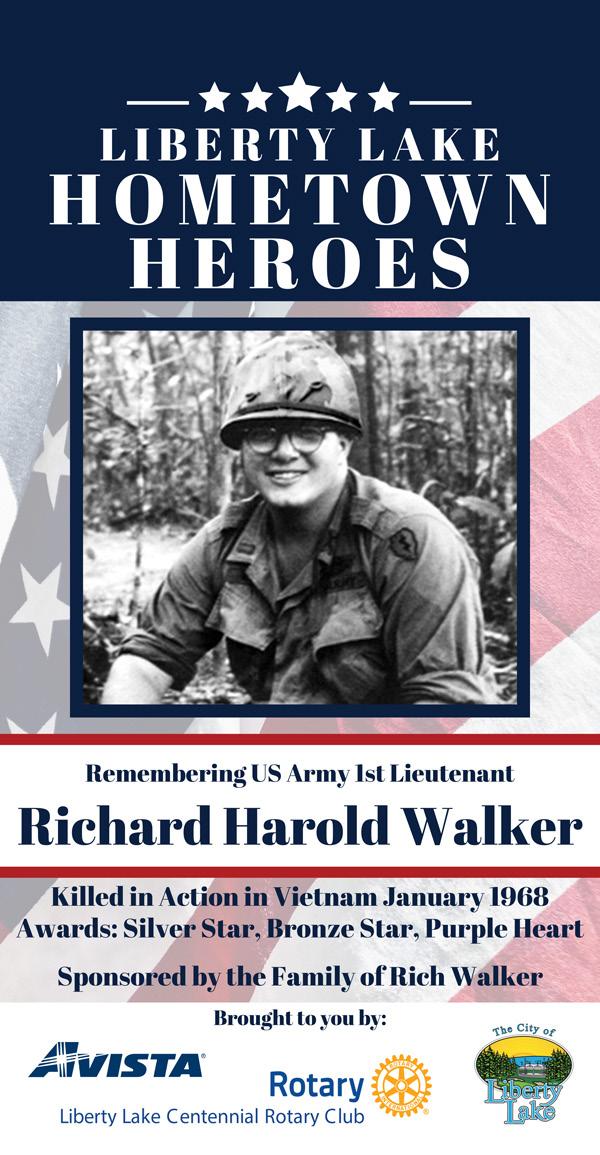
VETERANS HELP NET
Don Walker
Bryan Bledsoe
MANAGING EDITOR
Joe Butler
ART DIRECTOR
Anne Potter
DIRECTOR OF SALES
Scott Baumbach
Veterans Help Net partners with The Spokesman-Review to publish Veterans Chronicle each quarter to increase awareness about veteran issues and to help veterans find hope and help.
To share a veteran story or information about resources for veterans, please contact info@ veteranshelpnet.com, call (509) 998-6484 or visit www. VeteransHelpNet.com.
For advertising information, please contact advertising@spokesman. com or (509) 459-5095.
No portion of this magazine may be reproduced in whole or in part without written consent of the publisher.



































Editor’s note: This article was prepared with the help of the Artificial Intelligence application ChatGBT.
The Mann-Grandstaff VA Medical Center (located in Spokane, Washington) is one of the top-rated VA hospitals in the U.S. and offers a variety of benefits and services to veterans. Here are some reasons why you might consider using this facility: Why Use Mann-Grandstaff VA Medical Center?
1. Comprehensive Health Care Services: Mann-Grandstaff provides a full range of medical services including primary care, mental health care, specialized services in cardiology, oncology, rehabilitation, and more. It offers inpatient and outpatient care and has a dedicated focus on veterans’ unique healthcare needs.
2. Veteran-Centered Care:
The center is known for its commitment to serving veterans with a high level of personalized care. Many of the healthcare providers at Mann-Grandstaff are trained
specifically to understand the challenges veterans face, including PTSD, traumatic brain injuries (TBI), and other service-related conditions.
3. Mental Health & Wellness:
It is particularly recognized for its mental health services, which are tailored to veterans dealing with the emotional and psychological aspects of their service. This includes PTSD treatment, suicide prevention, and substance use programs.
4. Telehealth Services:
The facility offers telehealth capabilities, allowing veterans in rural areas to access highquality healthcare without needing to travel long distances.
5. Research and Innovation:
The Mann-Grandstaff VA is actively involved in medical research, particularly in areas like trauma recovery, mental health, and veteranspecific chronic diseases, ensuring that veterans have access to the latest treatments and innovations.
GPT also shared other information about the facility, which is shared on Page 4.






For five years we have tried to show readers ways to help veterans, including information, stories, and articles about veteran resources and groups.
Here’s a way anyone can help if the opportunity presents itself.
Just cut out, print out, or take a photo of the “How Can I Get Help” resource directory found in every edition of Veterans Chronicle (It’s on this page!)
This makes it handy to give or send to anyone that needs help or information.
You don’t need to remember all the resources… just send them the info so they can pick a place to get the help they need.
The guide covers topics such as:
• Does the veteran or their family need ‘health care’?
• What benefits are available?
• What about disabilities?
• Is someone homeless?
• Is someone wondering about survivor benefits?
This resource guide can answer dozens of more questions.
For years, you have seen a question at the end of most or our articles.
It said…
“Does this sound like someone you know?” If it does, just send them the article or just a picture – your help may change their lives!
Do you know the Veterans’ Creed?
The Manuel Schneidmiller American Legion Post 154 in Rathdrum, Idaho, presents The Veterans’ Creed.
1. I am an American Veteran
2. I proudly served my Country.
3. I live the values I learned in the Military.
4. I continue to serve my Community, my Country, and my fellow Veterans.
5. I maintain my physical and mental discipline.
6. I continue to lead and improve.
7. I make a difference.
8. I honor and remember my fallen comrades.
Learn more at RATHDRUMPOST154.ORG
Every county and state has a Veteran Affairs office to answer questions about benefits and provide assistance. There are also other useful resources for veterans in the Inland Northwest.
VA.gov
The Department of Veterans Affairs website has resources on every topic relevant to veterans.
VA.gov/welcome-kit
The VA Welcome Guide covers all types of benefits and services available for veterans, new recruits, active service members and their families.
Explore.VA.gov/benefitsnavigator
Explore VA benefits and discover which ones you and your family may be eligible to receive.
Spokane County Regional Veteran Service
1117 N. Evergreen Rd., Spokane Valley, WA (509) 477-3690
Apply for emergency services, or have any benefits or service questions answered by 5 Veteran Service Officers (VSO) and staff.
Kootenai County Veteran Services and Benefits Office
120 E. Railroad Ave., Post Falls, ID (208) 446-1092
Meet with a VSO or staff for help with VA benefits enrollment, claims or other veteran needs.
Goodwill Support Services for Veteran Families (SSVF)
130 E. Third Ave., Spokane, WA (509) 828-2449
SSVF helps homeless veterans and their families find housing and connects veterans with other support organizations.
Healthcare for Homeless Veterans (HCHV)
504 E. Second Ave., Spokane, WA (509) 435-2019
Provides healthcare and outreach for housing, job opportunities and counseling.
Mann-Grandstaff VA Medical Center has received several notable awards and recognition for its excellence in patient care, including:
1. Joint Commission Accreditation: Mann-Grandstaff has earned the prestigious accreditation from the Joint Commission for providing high standards in patient care and safety.
2. Excellence in Mental Health Services: The facility is recognized for its mental health programs, particularly in areas of PTSD, depression, and substance use disorders, ranking among the top VA centers in these domains.
3. Patient Safety and Satisfaction: The center regularly receives high marks for patient safety and satisfaction, reflecting its commitment to providing quality healthcare in a compassionate and veteranfocused manner.
4. VA Quality of Care Awards:
The hospital has been recognized in the past for achieving high levels of patient outcomes, especially in veteran-centered care, clinical excellence, and efficiency of care delivery.
5. Research Contributions: Mann-Grandstaff VA is also well-regarded for its research contributions in areas like spinal cord injuries, traumatic brain injuries, and aging veterans’ health.
In summary, if you are a veteran, the Mann-Grandstaff VA Medical Center is a top-tier choice for your healthcare needs. With its wide range of services, specialized care, and consistent recognition for excellence, it is an excellent resource for veterans in the region.
For local help see “How Can I Get Help?” above.
Spokane County Regional Veteran Service (509) 477-3690
Kootenai County Veteran Services and Benefits Office
120 E. Railroad Ave., Post Falls, ID (208) 446-1092
Veteran Crisis Line 1 (800) 273-8255, press 1 North Idaho Crisis Center (208) 625-4884
Washington or Idaho 2-1-1
Dial “2-1-1” for health and human resources referrals.


By Westgate Resorts
Whether you’re involved in the military, you have a family tradition of veterans, or you’re just a history enthusiast, the scope and power of the U.S. Armed Forces is truly fascinating.
Our Department of Defense is arguably the most impressive organization in the world, and there is an unbelievable stockpile of information regarding our military and its history that will entertain and surprise the average person.
There are far more interesting aspects to our military than what military movies portray. Millions of personnel are spread abroad and in our hundreds of domestic bases, and their stories are all important. There are 21 military bases in Florida alone, representing every branch. The sheer magnitude of the current and historical status of the U.S. Armed forces can be intimidating to consider. This article will examine 20 military facts that may surprise you.
1 The scope of our military is far beyond what most people realize Spread between six branches: the Navy, Army, Air Force, Marine Corps, Space Force, and Coast Guard, the U.S. military employs nearly three million people and boasts an annual budget of more than $700 billion. Our defense spending alone is more than that of China, India, Russia, and the next eight highest defense spenders combined.
2 The Army is older than the country itself George Washington led the first continental army in June of 1775. This means that our Army predates our country by more than one year.
3 The Department of Defense is the world’s biggest employer With about 2.91 million employees, the U.S. Department of Defense employs more people than any other organization in the world, with China’s People’s Liberation Army coming in second with about 1.5 million. The Army
employs the most people out of any branch with the regular Army, Army National Guard, and Army Reserve collectively employing over a million personnel.
4 The Department of Defense owns over 30 million acres of land Despite not being a land management entity at its core, the DoD is the third largest land managing agency. Military engineers develop a wide variety of civil service projects.
5 The Army is responsible for mapping out the U.S. Military engagement may not have been the focus, but the Lewis and Clark expedition of 1804 were an army unit. Today they’re mostly remembered as explorers. The group traveled about 4,900 miles over the course of two years and four months, eventually landing themselves in history books forever.
6 There have been only five 5-star generals The five-star rank didn’t exist until 1944,
and it was retired in 1981 when Omar Bradley, the final recipient died. The most notable of these five men was former president Dwight D. Eisenhower. George Washington was formerly a five-star general, but he was posthumously promoted to a sixstar general in 1976.
7 The Air Force used to be a part of the Army The U.S. Air Force was established in 1907 as part of the army, where it remained for forty years. After World War II, the need for an independent air force became clear. While the War Department pushed for a unification of the Army and Navy, with land, air, and sea forces under one jurisdiction, the Navy opposed this plan. The National Security Act of 1947 solidified the Air Force’s independent status.
8 The Army offers holiday block leave vacations to soldiers in training At the end of every year, the army allows those in basic and advanced training to take holiday block leave vacations, a much-needed
break to spend time with their families and rest.
9 The Army is responsible for creating Ray-Bans In order to help pilots in the Air Force block the rays of the sun and reduce nausea and headaches while flying, Lieutenant General John MacCready asked Bausch & Lomb to create special glasses for them to wear. The result, Ray-Bans!
10 The military used submarines as early as the revolutionary war Most people probably think of submarines as fairly modern inventions that date back no more than a hundred years. However, the world’s first use of a submarine in warfare took place in 1776 when the American vessel The Turtle attempted to attach a time bomb to the bottom of the British ship Eagle in New York harbor. It was hand powered and could only accommodate one person aboard. Unfortunately, the mission failed, and the bomb blew up far away from its intended target.
11 Until 1946, the Air Force was part of the Army Back then, the Air Force was known as the Army Air Corps but changed after the National Security Act of 1947 when it became its own branch of the Armed Forces.
12 The Army has a history of investigating psychic phenomena In 1978, the U.S. Army established the Stargate Project, a secret unit which investigated psychic phenomena in both military and domestic situations. The unit primarily investigated remote viewing,
military’s history, dogs were not formally recognized for their services until World War II. They perform a diverse array of tasks including bomb detection, training, and attacks. Today there are about 2,500 active service dogs, with 700 deployed internationally. Not only are their services valuable, but the dogs also themselves are worth tons. A fully trained bomb detection dog is worth over $150,000.
14 The military is heavily involved in disaster relief
The Military Humanitarian Assistance and Disaster Relief
the Army developed CAM, or Cybernetic Anthropomorphous Machine, a robot whose purpose was to help soldiers carry equipment through rugged terrain for long distances. CAM was controlled by hand and foot movements with hydraulic valves. The robot weighed over 3,000 pounds.
16 Most U.S. Presidents served in the Army Before taking up their roles as Commander in Chief, 31 of the 46 U.S. Presidents served in some branch of the military. The Army boasts the most presidential alumni with 16. Obviously

which was the term chosen for the ability to see events and sites from a great distance. The project lasted until 1995. The film “The Men Who Stare at Goats” was inspired by the Stargate Project.
13 There are many dogs in the U.S. military Though they’ve been involved in every major conflict in our
(HADR) is a special operation that offers a helping hand to devastated countries. The HADR has played an important role in major disasters, such as earthquakes in Haiti and hurricanes that have hit the U.S. coasts. The Navy also has two hospital ships.
15 The military built a giant robot in the 1960s In 1968,
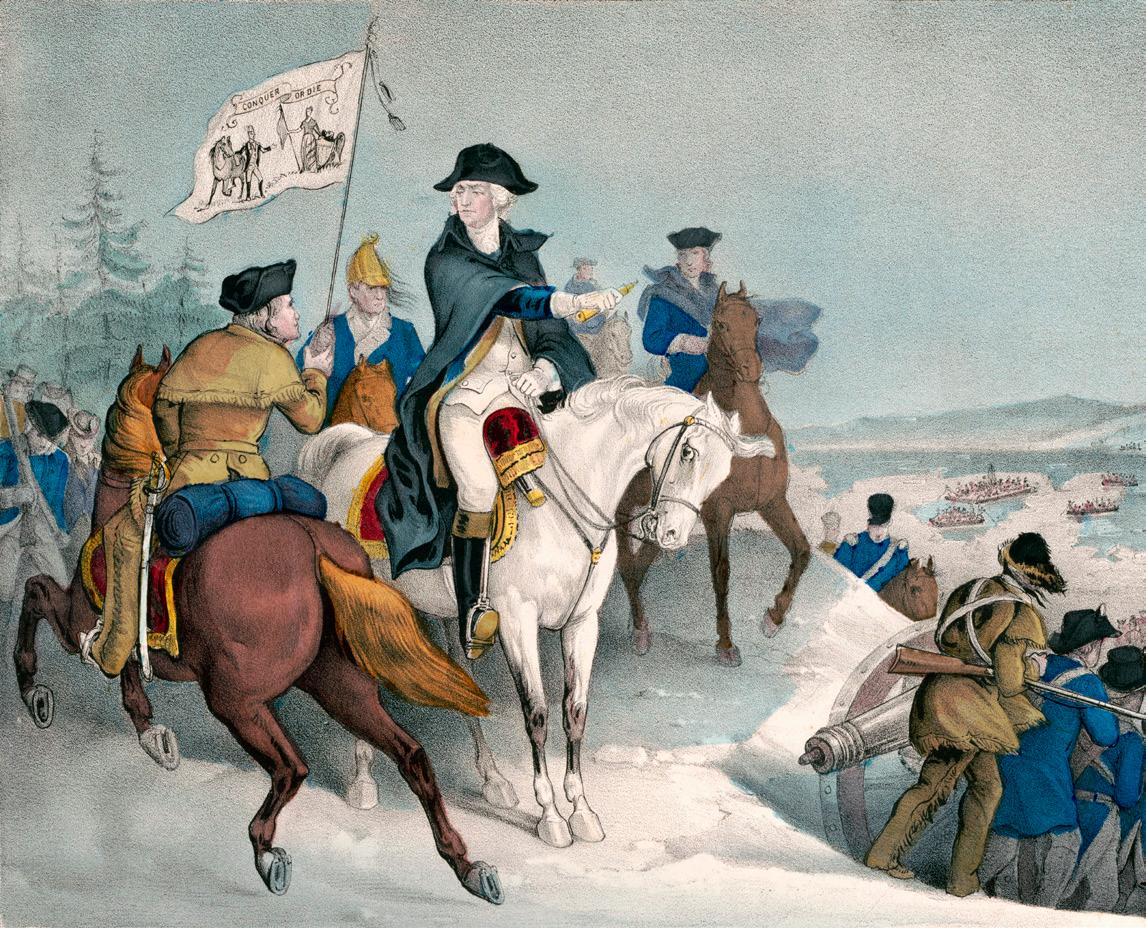
President Lincoln was the first president to officially sign the bill into effect. 200 medals were originally produced, and the first was awarded in 1862. Today, more than 3,500 soldiers have been awarded. The most notable of these recipients is former president Theodore Roosevelt.
18 The Army burns an insane amount of fuel If you think your truck guzzles gas, it’s got nothing on military usage. A 2011 study found that the Army uses about 22 gallons of fuel per soldier per day. This adds up to nearly a billion gallons per year. It takes a lot of power to run complex and powerful military vehicles.
20 There is a massive worldwide network of U.S. Military installations In order to maintain its interests, the U.S. military has a vast array of personnel deployed in over 150 countries around the world. In 2005, there was an estimated 737 military bases in foreign countries. Japan has the most currently active bases with 120, but Germany follows it with a close 119. South Korea comes in third with 73.
BONUS: The United States has military bases in at least 74 countries There are more than 800 military bases around the world. This is more than any other country in history.
serving in the military isn’t required, but it makes sense considering that the president is effectively the leader of the U.S. Armed Forces.
17 The Medal of Honor dates back to Abraham Lincoln In the 1800s, Sen. James Grimes of Iowa created a bill to promote the efficiency of the navy and create the Medal of Honor.
19 Military cemeteries and memorials make great destinations Our nation sports 26 permanent military cemeteries and 32 federal memorials, many of which are in beautiful and historic destinations like Washington D.C. or foreign countries like Belgium and France. These destinations make for great additions to vacations, allowing you to balance somber history with fun sight-seeing.
U.S. Armed Forces are an everchanging, multi-faceted set of systems, the scope of which is hard to comprehend. However, this means there is a treasure trove of fascinating things to discover. We hope this list has given you some insights into a few pockets of its complexity and helped you appreciate how powerful and historical these systems
VA disability compensation provides tax-free monthly payments. If you have a service-connected condition, you may be eligible for compensation. A serviceconnected condition means an illness or injury that was caused by—or got worse because of—your active military service. Keep reading to find out if you may be eligible.
The PACT Act expands benefit access for veterans exposed to burn pits and other toxic substances
The PACT Act is a new law that expands access to VA health care and benefits for veterans exposed to burn pits and other toxic substances. This law helps provide generations of veterans— and their survivors—with the care and benefits they’ve earned and deserve.
Am I eligible for VA disability compensation?
You may be eligible for VA disability
benefits or compensation if you meet both of these requirements.
Both of these must be true:
• You have a current illness or injury (known as a condition) that affects your mind or body, and
• You served on active duty, active duty for training, or inactive duty training
And at least one of these must be true:
• You got sick or injured while serving in the military—and can link this condition to your illness or injury (called an in-service disability claim), or
• You had an illness or injury before you joined the military—and serving made it worse (called a pre-service disability claim), or
• You have a disability related to your active-duty service that didn’t appear until after you ended your service (called a post-service disability claim)


Presumptive conditions
For some conditions, we automatically assume (or “presume”) that your service caused your condition. These are called presumptive conditions.
If you have a presumptive condition, you don’t need to prove that your service caused the condition. You only need to meet the service requirements for the presumption.
Find out more about these categories of presumptive conditions:
• A chronic (long-lasting) illness that appears within 1 year after discharge
• An illness caused by contact with contaminants (toxic chemicals) or other hazardous materials
• An illness caused by your time spent as a prisoner of war (POW)
For local help see the “How Can I Get Help?” section in this publication on page 5
Need help?
Women in service and women veterans can call Service Women’s Action Network’s 24/7. The Emergency Assistance Hotline at 1 (888) 669-0907 provides one-on-one support from a case manager, who is a trained support specialist. The service is free and confidential.
Learn more about SWAN at https://www.servicewomensactionnetwork.org/about

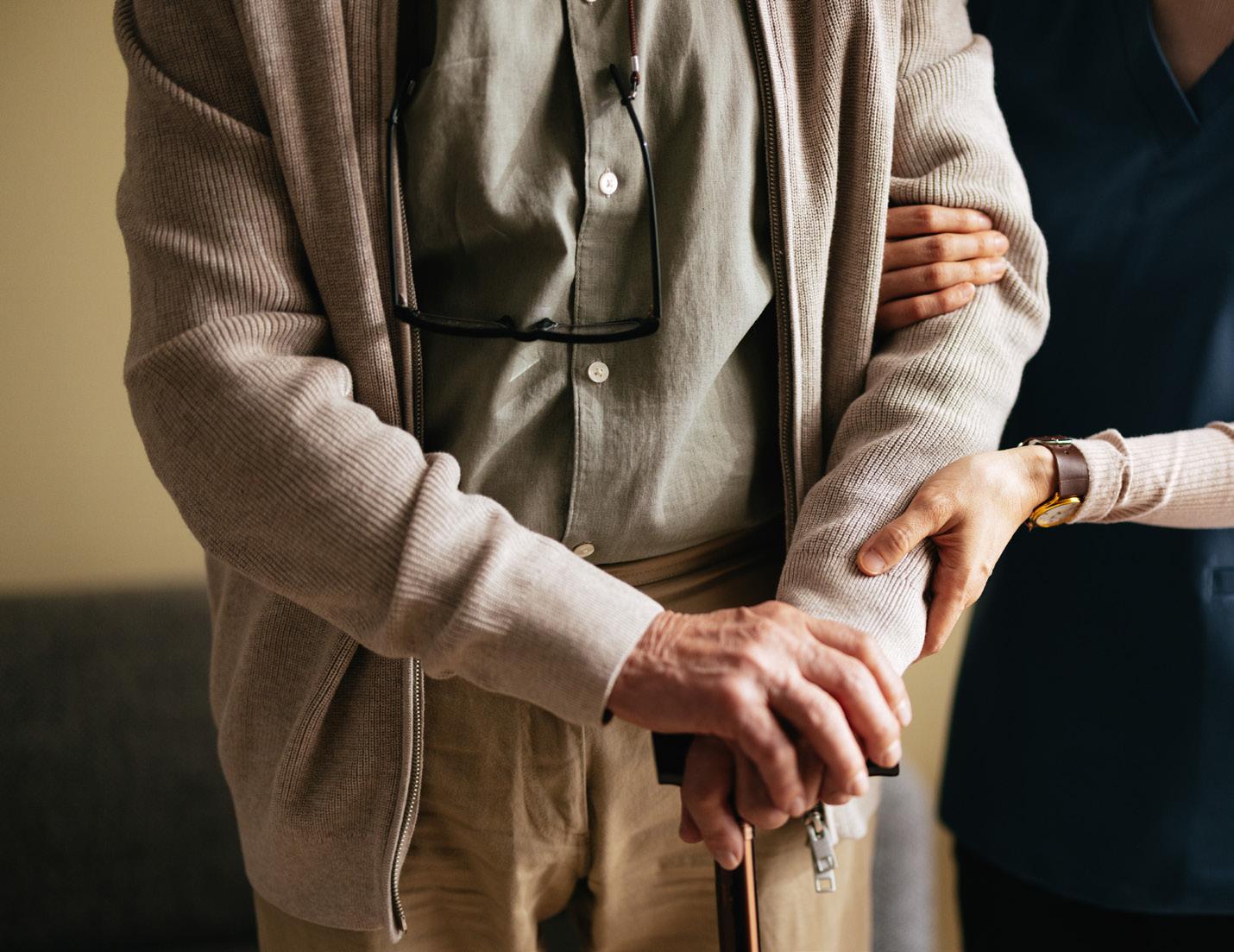
A Homemaker and Home Health Aide
is a trained person who can come to a veteran’s home and help the veteran take care of themselves and their daily activities. The services of a Homemaker and Home Health Aide can help Veterans remain living in their own home and can serve veterans of any age. Homemakers and Home Health Aides are not nurses, but they are supervised by a registered nurse who will help assess the veteran’s daily living needs.
This program is for veterans who need personal care services and help with activities of daily living. This program is also for veterans who are isolated, or their caregiver is experiencing burden.
Homemaker and Home Health Aide services can be used in combination with other Home and Community Based Services. Services may vary by location.
Homemaker Home Health Aides work
What services can I get?
Services are based on your assessed needs.
Talk with a VA social worker to find out what specific help you may be able to receive.
For example, an aide may be able to come to your house several times a week or just once in a while.
Examples of daily activities you may be able to receive help with include:
• Eating
• Getting dressed
• Personal grooming
• Bathing
• Using the bathroom
• Moving from one place to another
• Grocery shopping
You can continue to receive an aide’s services for as long as you need extra help with your daily activities.
How do I decide if a Homemaker and Home Health Aide is right for me?
You can use a Veteran Decision Aid for Care at Home or in the Community (https://www.va.gov/GERIATRICS/docs/ Veteran_Decision_Aid.pdf) to help you
figure out what home care services or long term care services may best meet your needs now or in the future.
There’s also a Caregiver SelfAssessment form at https://www.va.gov/ GERIATRICS/docs/Caregiver_Self_ Assessment.pdf. It can help your caregiver identify their own needs and decide how much support they can offer to you. Having this information from your caregiver, along with the involvement of your care team and social worker, will help you reach short-term and long-term care decisions.
Ask your social worker for these resources or download copies from the Making Decisions page at www.va.gov/Geriatrics. If Homemaker or Home Health Aide services are right for you, your VA social worker can help you make arrangements for those.
For local help see “How Can I Get Help?” section on Page 5.
This information provided by the Department of Veterans Affairs
for an organization that has a contract with VA. Homemaker or Home Health Aide services can be used as a part of an alternative to nursing home care, and to get respite care at home for veterans and their family caregiver. The services of a Homemaker or Home Health Aide can help veterans remain living in their own home and can serve veterans of any age.
I
All enrolled veterans are eligible for Homemaker Home Health Aide Care IF they are eligible for community care and meet the clinical criteria for the service and it is available. Services may vary by location.
A copay for Homemaker and Home Health Aide services may be charged based on your VA service-connected disability status.


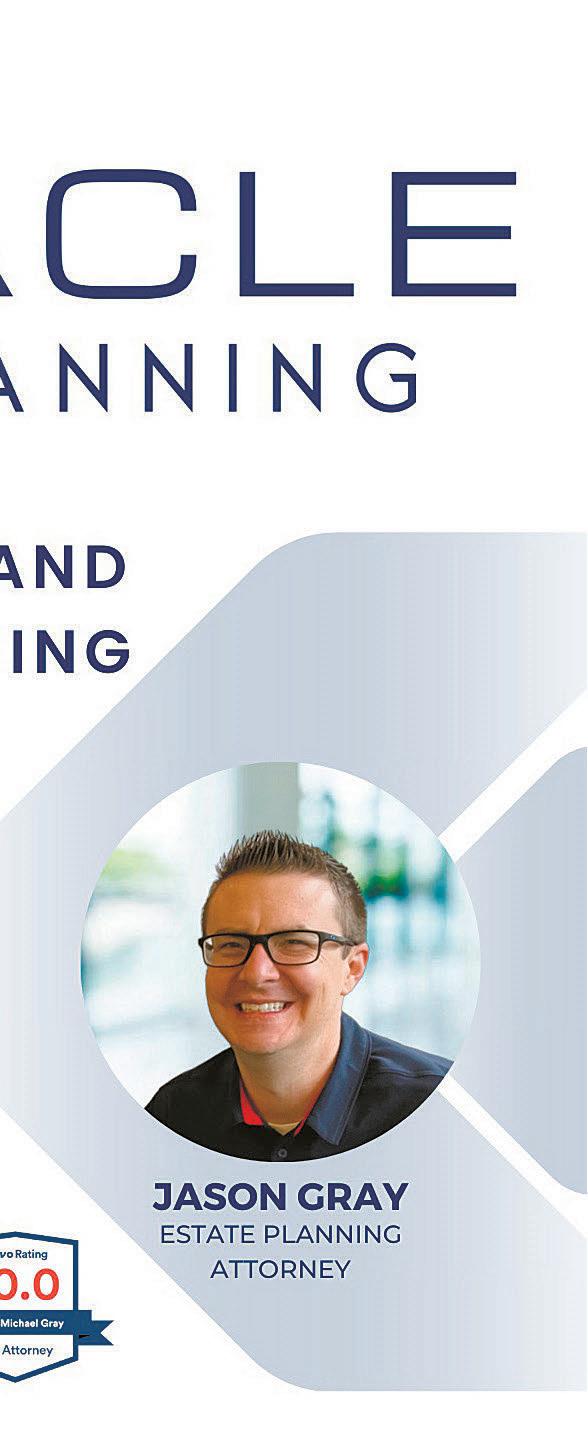
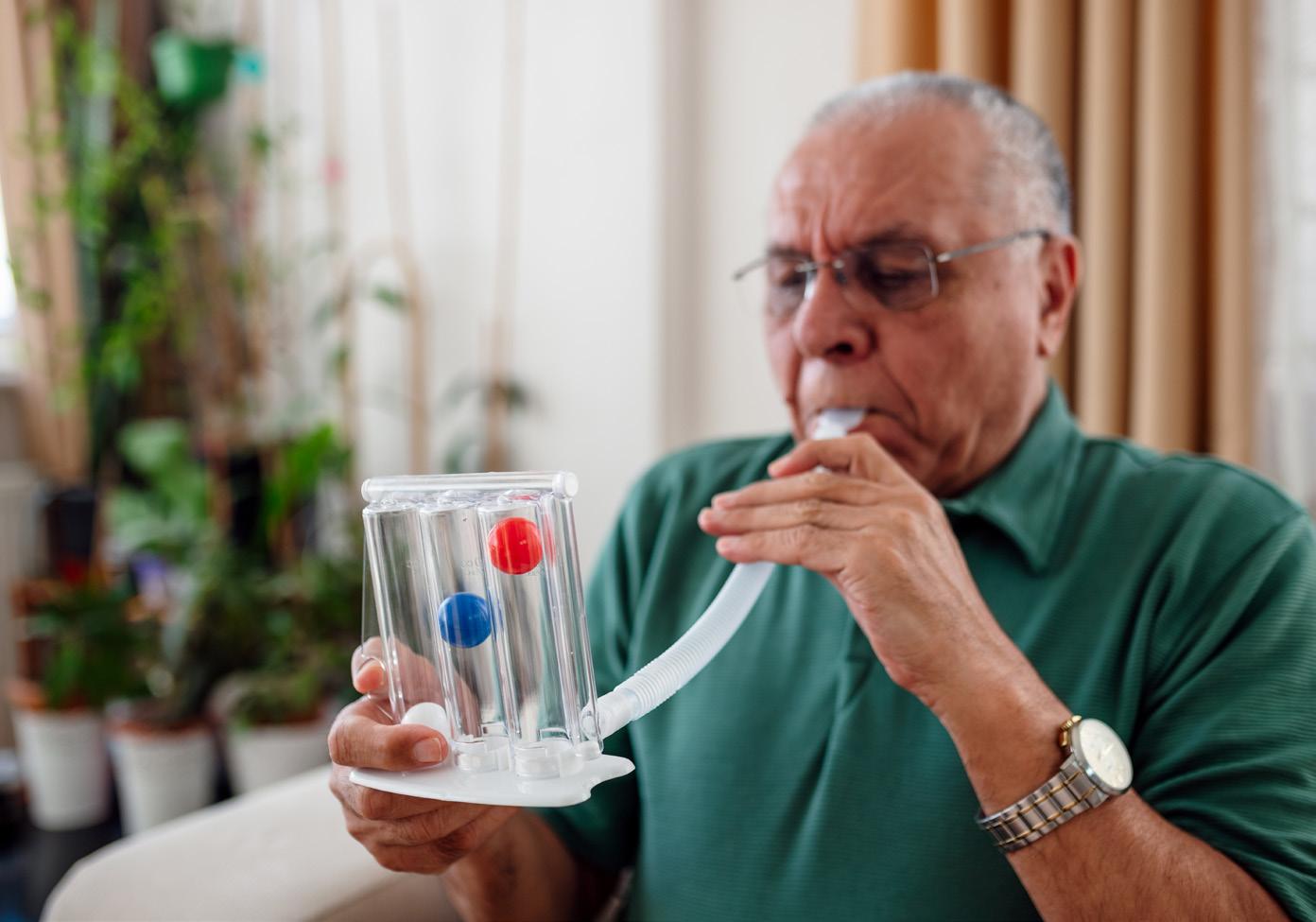

On Aug. 1, 2024, the U.S. Department of Veterans Affairs launched the redesigned Airborne Hazards and Open Burn Pit Registry after seeking extensive feedback from veterans and service members.
The registry is an important research tool that enables VA to identify and study health challenges spanning the veteran and service member population as a whole, providing veterans and service members of this generation an opportunity to help improve the care and benefits of veterans and service members in generations to come. Ultimately, the registry is a database that combines veteran and service member data to help VA better understand, research, and ultimately improve treatment and benefit options for the health challenges experienced by veterans and service members exposed to airborne hazards and burn pits during their military service.
Important updates to the registry include:
• The automatic inclusion of veterans and service members who meet criteria based on DoD records. (Learn more at https:// www.publichealth. va.gov/exposures/burnpits/ registry.asp
• The removal of a cumbersome 144-question registry questionnaire
• Establishment of an easy registry optout process
It is important for veterans to know that participation in the registry is optional and has no impact on, nor will it determine eligibility for VA health care and benefits.
Those who do not wish to be included in the registry can opt out by submitting an “opt out inquiry” at https:// vethome. va.gov/BurnPitRegistryOptOut/.
Veterans can check their status by contacting their environmental health coordinator at https:// www. publichealth.va.gov/exposures/ coordinators.asp.
To learn more about the AHOBPR visit https:// www.publichealth.va.gov/ exposures/burnpits/ registry.asp.
This information comes from the War Related Illness and Injury Study Center (WRIISC) Advantage Newsletter in Fall 2024
For local help see the “How Can I Get Help?” section on Page 5.
Beginning March 5, 2024, three new cohorts of veterans are now eligible to enroll directly in VA health care without first applying for VA benefits. The three cohorts are:
• Veterans who participated in a toxic exposure risk activity (TERA), as defined by law, while serving on active duty, active duty for training, or inactive duty training.
•Veterans who were assigned to a duty station in (including airspace above) certain locations during specific periods of: On or after August 2, 1990, in the following countries: Bahrain, Iraq, Kuwait, Oman, Qatar, Saudi Arabia, Somalia, or the United Arab Emirates. Or on or after September 11, 2001, in the following countries: Afghanistan, Djibouti, Egypt, Jordan, Lebanon, Syria, Yemen, Uzbekistan, or any other country determined relevant by VA. (Note: VA has not determined any other country relevant at this time.)
•Veterans who were deployed in support of Operation Enduring Freedom, Operation Freedom’s Sentinel, Operation Iraqi Freedom, Operation New Dawn, Operation Inherent Resolve, and Resolute Support Mission.
VA also announced that they are expanding healthcare eligibility to all veterans who served in the Vietnam War, the Gulf War, Iraq, Afghanistan, or any other combat zone after 9/11/2001. Originally, the PACT Act called for a phased-in approach, but has instead opened this expanded eligibility to VA Healthcare effective March 5, 2024.
Please encourage any eligible veterans to enroll in VA healthcare; they can do so online at https://www. va.gov/healthcare/apply/application/ introduction, by phone at 877-2228387, or by visiting a local VA medical facility.
Veterans who qualify under Section 103 will be allocated to Priority Group 6, unless eligible for enrollment in a higher priority group, and can enroll directly in VA health care without first applying for VA benefits.
For local help and information, see “How Can I Get Help?” on Page 5 of this publication.
Environmental health registry assessments benefit both you and your fellow veterans. “For veterans, environmental health registry assessments provide an opportunity to proactively engage with a clinician to address personal concerns regarding exposures encountered during your military service,” said Kelly Hager, MD, MPH; an Internal Medicine and OccupationalEnvironmental Medicine Physician with VET-HOME.
Often, you spend all of your medical visit time addressing your immediate health concerns or ongoing medical conditions, explained David W. Parler, MD, a Physician Supervisor with VET-HOME.
“Registry assessment visits can provide an opportunity ’free and clear‘ of your immediate treatment needs or chronic health maintenance to set aside time to discuss military environmental exposures,” he said.
In addition, these assessments allow for documentation of your health concerns in your medical record. “This allows VA or Care in the Community (CITI) providers to better understand your military service and environmental exposures,” said Tanya Sonderby, MS, PA-C, a Physician Assistant with VET-HOME. “It may not change future treatment, but it can impact
diagnostic evaluation of future reported symptoms,” she added. You may also receive counseling to help you live a better life, such as guidance on stress reduction, nutrition, quality sleep, and health care screening recommendations, and connections to follow-up care, explained Victoria Ramirez, MD, Lead Environmental Health Physician at the VA Palo Alto Health Care System.
An environmental health registry evaluation benefits not just you, but other veterans as well. Your assessment provides data that can be used for research and to guide future care. Dr. Hager explained, the information obtained in a registry evaluation can be combined with data from other Veterans who participate, specifically, those who served at the same time as you or similar location. Together, this research helps VA better understand and respond to health problems for all veterans and consider future presumptions.
For local help see the “How Can I Get Help?” section on Page 5.
